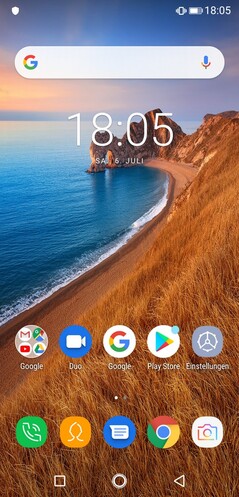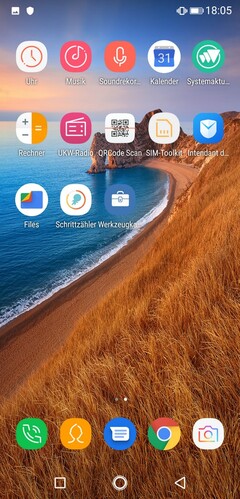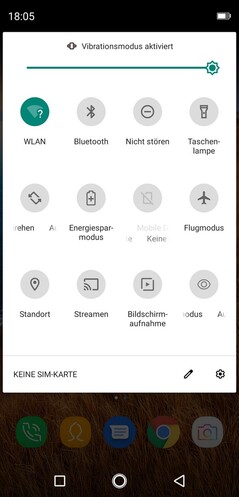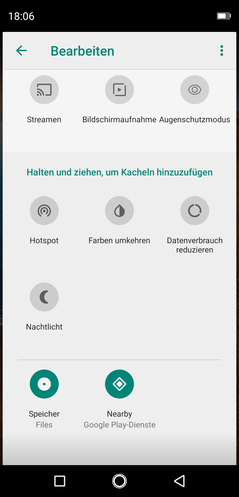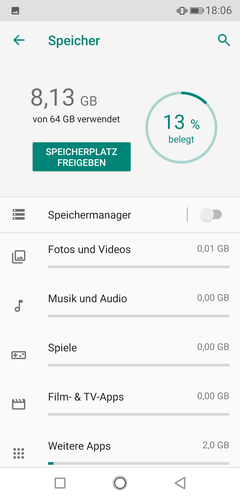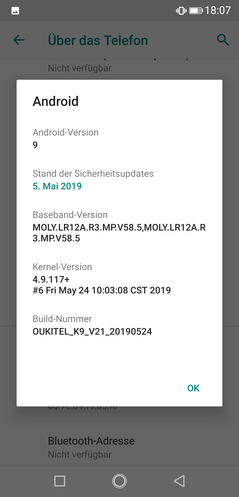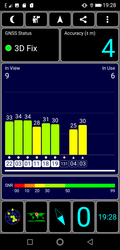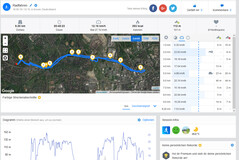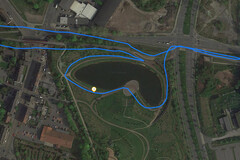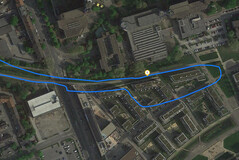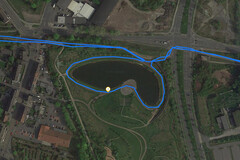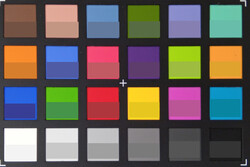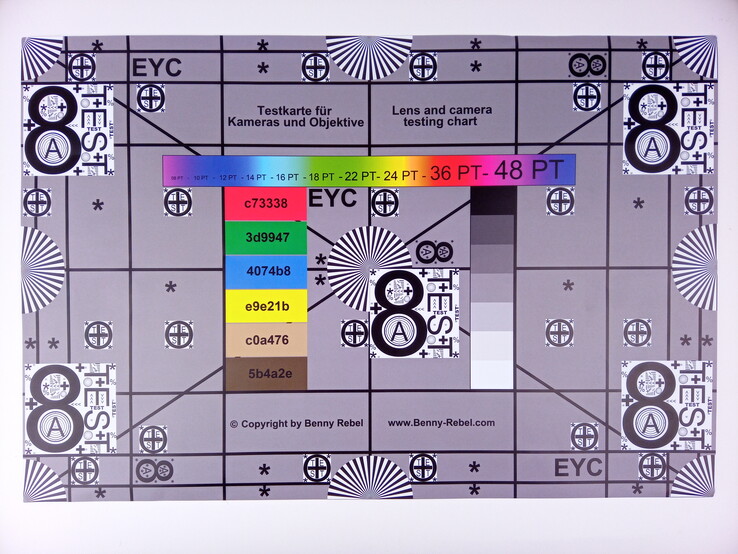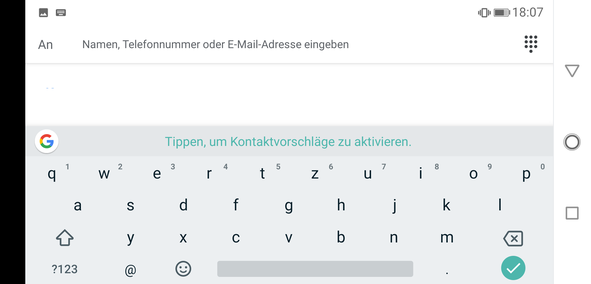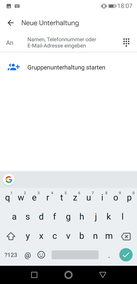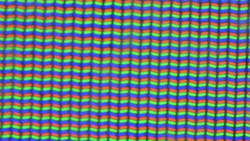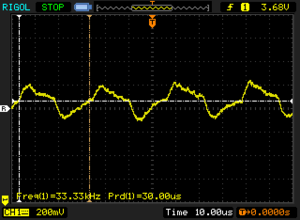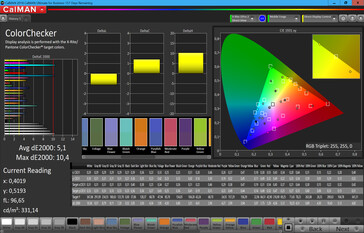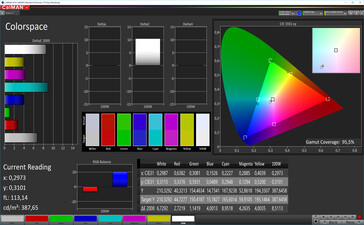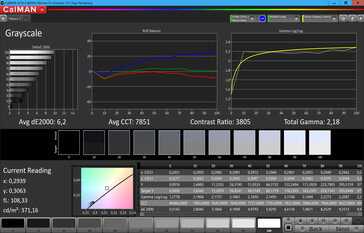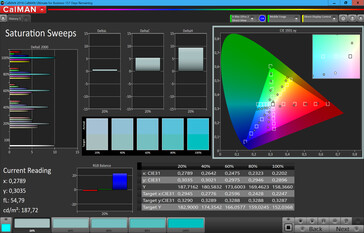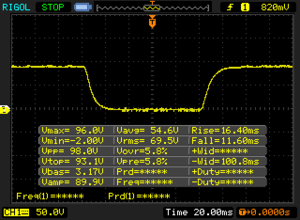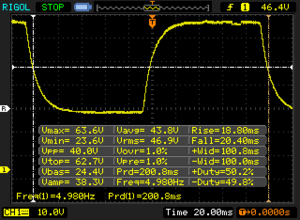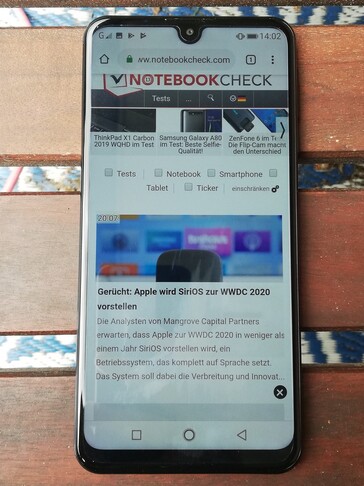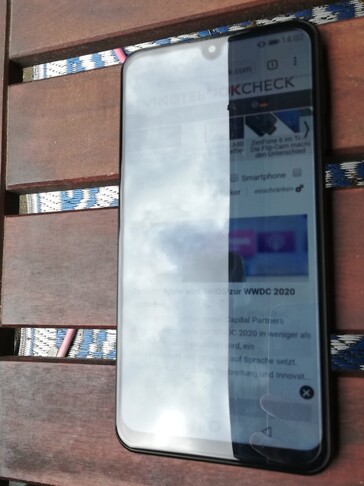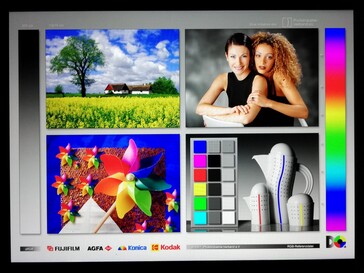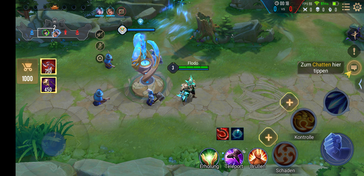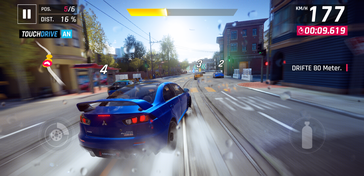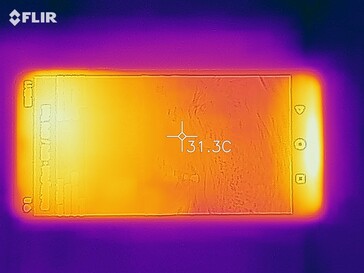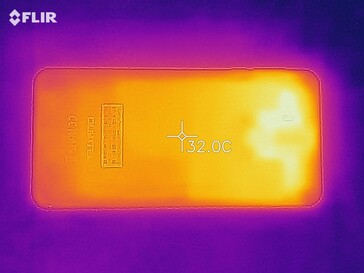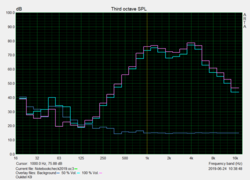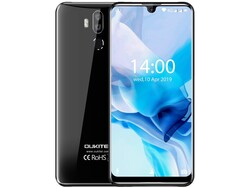Oukitel K9 smartphone review: Gigantic smartphone at an affordable price
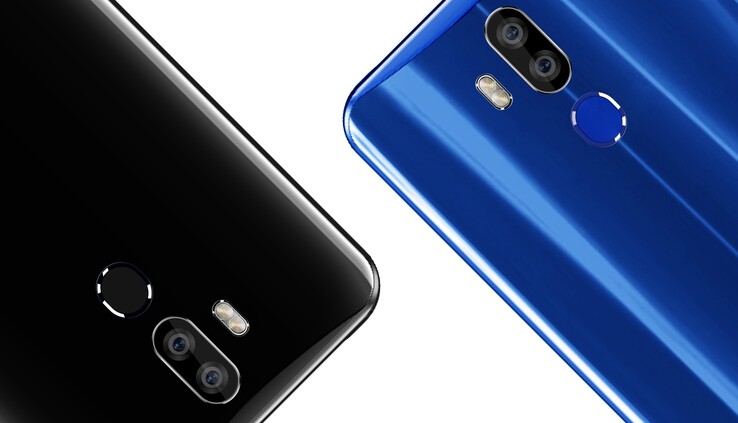
The Chinese manufacturer, Oukitel, makes an appearance in our reviews mostly with budget smartphones belonging to the entry level and the lower mid-range. Next to robust smartphones such as the Oukitel WP1, buyers can also choose from several slim phones with large displays, such as the U23, the C15 Pro and the C13 Pro. For a price of about 240 Euros (~$267), the manufacturer carries its concept to the extreme with the K9 and opts for a 7.12-inch display with slim bezels and lower-mid-range hardware.
A Mediatek Helio P35 MT6765 and 4 GB of RAM take care of providing a smooth operating system. In addition, there is a PowerVR GE8320 graphics unit and 64 GB eMMC flash storage. But the Oukitel is not the only one on the market with this configuration and size. It has to face some rivals instead. The Xiaomi Mi Max 3, the Huawei P Smart Z 2019, the Honor 8X and the ZTE Blade V10 are all among the competitors. In addition, further smartphones found in our database can be added to the comparison in each table.
Case - Large battery in a slim design
Oukitel has given the K9 a modern design with slim display bezels and the largest possible display area in the front. The frame is composed of metal, and the back is made of plastic. The quality is very high, leaving no room for criticism. All places in which materials were merged are very consistent and can be compared to more expensive smartphones without issues. The rounded edges provide a good surface feel, and the K9 sits stably in the hand despite its size. Furthermore, buyers can choose from blue and black colors.
As expected, the K9 is the smartphone with the largest measurements in our test field. However, the manufacturer uses the case in relation to the display a bit better since the Xiaomi Mi Max 3, for example, has almost the same measurements despite having a slightly smaller display. The thickness is also only a bit taller with the K9, so that it can still be regarded as a slim phone. With a weight of 232 grams (~8.2 oz), it is not exactly light, but it is still far from being heavy.
Connectivity - Mid-range phablet with dual SIM
Oukitel equips the K9 with a Mediatek Helio P35 MT6765 SoC, a PowerVR GE8320 graphics unit, 4 GB of RAM and 64 GB eMMC flash storage. The latter can be expanded by up to 128 GB through a microSD card, according to the manufacturer. This removes the dual-SIM functionality though. The hybrid slot can only accept two Nano SIM cards or one Nano SIM and one microSD card at the same time. Both SIM slots support LTE and can make use of VoLTE and VoWLAN services, as long as the specific network provider offers these functions.
The Oukitel K9 lacks both NFC and a 3.5 mm audio jack. But with the respective adapter, headphones or external data storage devices can be connected to the Android phablet through the USB Type-C port. However, this is limited internally to the USB 2.0 standard. In addition, due to the missing Widevine L1, HD content from services such as Netflix, Amazon Prime or Maxdome cannot be streamed. Furthermore, the Camera2 API is not completely available with "Full".
Software - Android Pie in Chinese smartphone
Oukitel has configured the K9 with a relatively pure Android Pie system in the version 9 and security patches at the level of May 5, 2019. The manufacturer's adjustments are limited to some changed icons, such as with the telephone and contacts apps. Moreover, Android connoisseurs and newcomers will quickly find their way around. About 55 GB of free storage space is available for the installation of apps and the storage of personal data. This space can be expanded through the use of a microSD card, but apps cannot be stored there, and reformatting it as internal storage is not possible either. Furthermore, only one single user can be logged in with the Oukitel K9 since the user account control feature is not available.
Communication and GPS - Oukitel K9 comes with LTE and fast Wi-Fi
The Oukitel K9 can establish mobile radio connections in GSM, 3G and LTE networks. The latter is possible with LTE category 6, with which download speeds of up to 300 Mb/s and upload speeds of up to 50 Mb/s can be reached. Bluetooth 4.2 and Wi-Fi are available for wireless connections in local areas.
In our Wi-Fi test, the Oukitel smartphone reaches 344 Mb/s on average for receiving data and 290 Mb/s for sending data. Due to the lack of 2x2 MIMO antenna technology, no outstanding speeds are reached, but the results are satisfactory and good enough to earn the second place in our test field.
| Networking | |
| iperf3 transmit AX12 | |
| ZTE Blade V10 | |
| Oukitel K9 | |
| Xiaomi Mi Max 3 | |
| Huawei P Smart Z 2019 | |
| Honor 8X | |
| iperf3 receive AX12 | |
| Xiaomi Mi Max 3 | |
| Oukitel K9 | |
| ZTE Blade V10 | |
| Honor 8X | |
| Huawei P Smart Z 2019 | |
We use the GPS Test app in order to verify how well the Oukitel K9 is able to determine its location. The Chinese phablet supports GPS and GLONASS, with which we were able to reach an accuracy of about four meters (~13 ft) outdoors. On the other hand, obtaining a positioning was not possible indoors.
We compare the positioning system of the Oukitel K9 with our reference device, the Garmin Edge 500, on our mandatory bike ride. The recorded course paths are very far apart at times. The Android phablet indicates our position with such a strong deviation that it is only suitable for the easiest navigation tasks.
Telephone and call quality - Phablet with LTE and loud volume
The standard telephone app from Google is available to users with the Oukitel K9. This allows the direct view of saved favorites and the quick display of a number keypad for the input of telephone numbers. Two further tabs show missed calls and contacts.
The Oukitel smartphone shows good volume during calls, where voices sound a bit distorted at higher levels. Ambient noise is only filtered out to a small degree, which results in there often being noise to be heard.
Cameras - Dual-camera setup only delivers moderate pictures
Oukitel equips the K9 with a 16 + 2 MP main camera with a Sony IMX298 sensor. There is also an 8 MP camera on the front for selfie enthusiasts. Portrait shots with moderate quality can be produced with this. The captured subjects look pale and show a clear blur at the edges of objects. Colors also look weak, making the selfie camera only suitable for occasional snapshots. Users only have a few options to adjust the image quality of portrait photos within the camera app. Next to a black-and-white mode, only beautifying options are available, which can be used to soften the skin or to make the eyes bigger, for example.
Panoramic photos can be taken with the main camera in the Oukitel K9, albeit with a quality below average. Although the overall view conveys the basic idea of the chosen subject, details show a lot of blur, and same-colored surfaces are very grainy. Colors appear relatively strong, and the image shows only minor problems with different brightness levels. In close range, the K9 delivers significantly better results and shows many details and strong colors. Object borders are strongly separated from one another in the focus area and only start to become grainy when approaching the edges of the image. Objects photographed under poor lighting conditions are still vaguely recognizable, but a large portion of the photo gets lost in darkness. Alongside the adjustment options that are also available for the front camera, users can also access a Bokeh mode and a professional mode with the main camera. The latter allows the manual setting of the white balance, the ISO value and the brightness to up to seven predefined levels.
Video recordings are of a similar quality to those of our sample photographs. However, quick movements produce a slight smearing effect, and the camera needs a longer moment to adjust to changes in the lighting behavior. Users can choose between the following resolutions: FHD 1920x1080, HD 1280x720, VGA 640x480 and CIF 352x288. A high-framerate mode or something similar is not available.
We use ColorChecker Passport to verify how well the camera in the Oukitel K9 is able to reproduce colors. This shows that they are captured more brightly than they should. Dark gray tones, on the other hand, are photographed with too much darkness.
The Chinese phablet with Android is able to reproduce our test chart in a detailed manner under controlled lighting conditions, where colors appear too bright here as well. Considerable blur is introduced on the edges, and a strong paleness can be seen in the lower corners. The test chart is barely recognizable with a defined lighting of one Lux.
Accessories and warranty - Great package with cover and audio adapter
The box of the Oukitel K9 packs a USB power adapter with the corresponding USB Type-C cable, a silicon cover, a USB Type-C to Type-A OTG adapter, a USB Type-C to 3.5 mm audio adapter and a SIM needle. The manufacturer does not include further accessories that have been specially made for the Oukitel K9.
Oukitel honors a 12-month warranty for buyers of the K9. Customers in Germany can also rely on the dealer's warranty. Everything worth knowing in this regard can be found in our guarantees, return policies and warranties FAQ. We have also summarized what should be considered when importing devices in our article on smartphone purchases in China.
Input devices and handling - Chinese smartphone with large display
Google's standard keyboard app Gboard is available to users of the Oukitel K9 for text input. Longer sentences can be typed in quickly and easily with it, in which the touchscreen transfers every input reliably to the system. The display's surface provides the finger tips with only a light friction, which means that drag-and-drop actions can still be carried out comparably well. The position sensor reacts reliably to the smartphone's movements as well and immediately adapts the content to the respective orientation.
The fingerprint scanner in the back can be used to unlock the Android phone. It recognizes saved fingerprints quickly and reliably. In addition, there is also the possibility of saving a face with face unlock, which unlocks the phone as soon as it is recognized by the front camera. This function also worked reliably in our test, where good lighting conditions were an advantage.
Display - Outstanding contrast and black value in Oukitel K9
Oukitel equipped the K9 with a 7.12-inch IPS panel and a resolution of 2244x1080 pixels in the 18.7:9 format. The average brightness of 362.3 cd/m² is significantly bellow the values of the other smartphones in our test field. The same goes for the brightness distribution of 89 percent. With the sensor, we measure a maximum brightness of 375 cd/m², whereas only a comparably low 280 cd/m² is reached in the APL50 test. The lowest adjustable brightness level provides a luminance of 14.23 cd/m2.
Moreover, our measurements show that Oukitel is not using PWM to control the brightness.
| |||||||||||||||||||||||||
Brightness Distribution: 89 %
Center on Battery: 369 cd/m²
Contrast: 3690:1 (Black: 0.1 cd/m²)
ΔE ColorChecker Calman: 5.1 | ∀{0.5-29.43 Ø4.79}
ΔE Greyscale Calman: 6.2 | ∀{0.09-98 Ø5}
95.5% sRGB (Calman 2D)
Gamma: 2.18
CCT: 7851 K
| Oukitel K9 IPS, 2244x1080, 7.1" | Xiaomi Mi Max 3 IPS, 2160x1080, 6.9" | ZTE Blade V10 IPS, 2280x1080, 6.3" | Honor 8X LCD IPS, 2340x1080, 6.5" | Huawei P Smart Z 2019 LCD IPS, 2340x1080, 6.6" | |
|---|---|---|---|---|---|
| Screen | 1% | -54% | -66% | -46% | |
| Brightness middle (cd/m²) | 369 | 508 38% | 492 33% | 484 31% | 439 19% |
| Brightness (cd/m²) | 362 | 505 40% | 485 34% | 469 30% | 431 19% |
| Brightness Distribution (%) | 89 | 91 2% | 93 4% | 93 4% | 92 3% |
| Black Level * (cd/m²) | 0.1 | 0.28 -180% | 0.32 -220% | 0.55 -450% | 0.36 -260% |
| Contrast (:1) | 3690 | 1814 -51% | 1538 -58% | 880 -76% | 1219 -67% |
| Colorchecker dE 2000 * | 5.1 | 2.85 44% | 8.6 -69% | 7.3 -43% | 6.4 -25% |
| Colorchecker dE 2000 max. * | 10.4 | 6.21 40% | 17.1 -64% | 11.1 -7% | 12.1 -16% |
| Greyscale dE 2000 * | 6.2 | 1.7 73% | 11.8 -90% | 7.4 -19% | 8.6 -39% |
| Gamma | 2.18 101% | 2.226 99% | 2.14 103% | 2.16 102% | 2.18 101% |
| CCT | 7851 83% | 6860 95% | 10458 62% | 8534 76% | 9021 72% |
* ... smaller is better
Screen Flickering / PWM (Pulse-Width Modulation)
| Screen flickering / PWM not detected | |||
In comparison: 53 % of all tested devices do not use PWM to dim the display. If PWM was detected, an average of 8152 (minimum: 5 - maximum: 343500) Hz was measured. | |||
With a contrast ratio of 3690:1 and a black value of 0.1 cd/m², the K9 manages to significantly stand out from the competition in our test field in regard to these aspects. Thus colors appear very well separated from each other, and black tones are deep and full. The K9 reaches a slightly higher, but still very good, black value of 0.17 cd/m² in the APL50 test.
The CalMAN analysis also shows that the colors in the Oukitel phone are reproduced with a clear blue tint. This can only be evened out a bit through the night light option, with which a yellow tint with a freely selectable intensity is drawn over the image.
Display Response Times
| ↔ Response Time Black to White | ||
|---|---|---|
| 28 ms ... rise ↗ and fall ↘ combined | ↗ 16.4 ms rise | |
| ↘ 11.6 ms fall | ||
| The screen shows relatively slow response rates in our tests and may be too slow for gamers. In comparison, all tested devices range from 0.1 (minimum) to 240 (maximum) ms. » 70 % of all devices are better. This means that the measured response time is worse than the average of all tested devices (20.3 ms). | ||
| ↔ Response Time 50% Grey to 80% Grey | ||
| 39.2 ms ... rise ↗ and fall ↘ combined | ↗ 18.8 ms rise | |
| ↘ 20.4 ms fall | ||
| The screen shows slow response rates in our tests and will be unsatisfactory for gamers. In comparison, all tested devices range from 0.165 (minimum) to 636 (maximum) ms. » 59 % of all devices are better. This means that the measured response time is worse than the average of all tested devices (31.7 ms). | ||
The IPS panel in the Oukitel K9 has very stable viewing angles. Content is readable from almost any angle, without it becoming distorted or showing the wrong colors. As long as visibility is not hindered by reflections, the K9 can even be used from unusual positions.
Performance - Mid-range phablet for everyday life
The Oukitel K9 offers a typical mid-range configuration with the Mediatek Helio P35 MT6765 and 4 GB of RAM. This is joined by the PowerVR GE8320 graphics unit and 64 GB eMMC flash storage. Modern applications required in daily life can be used without issues. Apps with higher demand for graphics or system performance eventually take longer to load.
Although the Chinese smartphone shows results corresponding to the expected performance of its SoC in our benchmark tests, these values are only good enough to earn the last place in our test field. The Xiaomi Mi Max 3, which is the most suitable alternative due its size, also performed considerably better to some extent here.
| PCMark for Android | |
| Work performance score (sort by value) | |
| Oukitel K9 | |
| Xiaomi Mi Max 3 | |
| ZTE Blade V10 | |
| Honor 8X | |
| Huawei P Smart Z 2019 | |
| Average Mediatek Helio P35 MT6765 (4040 - 7753, n=8) | |
| Work 2.0 performance score (sort by value) | |
| Oukitel K9 | |
| Xiaomi Mi Max 3 | |
| ZTE Blade V10 | |
| Honor 8X | |
| Huawei P Smart Z 2019 | |
| Average Mediatek Helio P35 MT6765 (3814 - 5794, n=11) | |
| GFXBench 3.0 | |
| on screen Manhattan Onscreen OGL (sort by value) | |
| Oukitel K9 | |
| Xiaomi Mi Max 3 | |
| ZTE Blade V10 | |
| Honor 8X | |
| Huawei P Smart Z 2019 | |
| Average Mediatek Helio P35 MT6765 (9.1 - 20, n=6) | |
| Average of class Smartphone (18 - 166, n=159, last 2 years) | |
| 1920x1080 1080p Manhattan Offscreen (sort by value) | |
| Oukitel K9 | |
| Xiaomi Mi Max 3 | |
| ZTE Blade V10 | |
| Honor 8X | |
| Huawei P Smart Z 2019 | |
| Average Mediatek Helio P35 MT6765 (9.8 - 12, n=6) | |
| Average of class Smartphone (12 - 606, n=158, last 2 years) | |
| GFXBench 3.1 | |
| on screen Manhattan ES 3.1 Onscreen (sort by value) | |
| Oukitel K9 | |
| Xiaomi Mi Max 3 | |
| ZTE Blade V10 | |
| Honor 8X | |
| Huawei P Smart Z 2019 | |
| Average Mediatek Helio P35 MT6765 (6 - 14, n=6) | |
| Average of class Smartphone (11 - 166, n=159, last 2 years) | |
| 1920x1080 Manhattan ES 3.1 Offscreen (sort by value) | |
| Oukitel K9 | |
| Xiaomi Mi Max 3 | |
| ZTE Blade V10 | |
| Honor 8X | |
| Huawei P Smart Z 2019 | |
| Average Mediatek Helio P35 MT6765 (5.8 - 8.1, n=6) | |
| Average of class Smartphone (8.4 - 413, n=158, last 2 years) | |
| AnTuTu v7 - Total Score (sort by value) | |
| Oukitel K9 | |
| Xiaomi Mi Max 3 | |
| ZTE Blade V10 | |
| Honor 8X | |
| Huawei P Smart Z 2019 | |
| Average Mediatek Helio P35 MT6765 (n=1) | |
In the browser benchmarks, the impression so far continues. The Oukitel K9 is only able to make it to the last place in our test field in this regard too. Nonetheless, the browser is smooth in everyday use, and websites are loaded quickly. Only media content requires a bit longer to become visible.
| Jetstream 2 - 2.0 Total Score | |
| Average of class Smartphone (23.8 - 387, n=156, last 2 years) | |
| Huawei P Smart Z 2019 (Chrome 74) | |
| ZTE Blade V10 (Chrome 74) | |
| Average Mediatek Helio P35 MT6765 (13.6 - 17.3, n=4) | |
| Oukitel K9 (Chrome 75) | |
| JetStream 1.1 - Total Score | |
| ZTE Blade V10 (Chrome 74) | |
| Honor 8X (Chrome 70) | |
| Xiaomi Mi Max 3 (Chrome 69) | |
| Average Mediatek Helio P35 MT6765 (23.8 - 31.3, n=5) | |
| Oukitel K9 (Chrome 75) | |
| Speedometer 2.0 - Result 2.0 | |
| Average of class Smartphone (15.2 - 643, n=132, last 2 years) | |
| ZTE Blade V10 (Chrome 74) | |
| Oukitel K9 (Chrome 75) | |
| Average Mediatek Helio P35 MT6765 (13.7 - 16, n=4) | |
| WebXPRT 3 - Overall | |
| Average of class Smartphone (38 - 380, n=41, last 2 years) | |
| Honor 8X (Chrome 70) | |
| ZTE Blade V10 (Chrome 74) | |
| Average Mediatek Helio P35 MT6765 (29 - 36, n=4) | |
| Oukitel K9 (Chrome 75) | |
| Octane V2 - Total Score | |
| Average of class Smartphone (2228 - 121337, n=202, last 2 years) | |
| Huawei P Smart Z 2019 (Chrome 74) | |
| ZTE Blade V10 (Chrome 74) | |
| Honor 8X (Chrome 70) | |
| Xiaomi Mi Max 3 (Chrome 69) | |
| Average Mediatek Helio P35 MT6765 (4347 - 7140, n=6) | |
| Oukitel K9 (Chrome 75) | |
| Mozilla Kraken 1.1 - Total | |
| Average Mediatek Helio P35 MT6765 (9756 - 11323, n=5) | |
| Oukitel K9 (Chrome 75) | |
| Xiaomi Mi Max 3 (Chrome 69) | |
| Honor 8X | |
| ZTE Blade V10 (Chrome 74) | |
| Huawei P Smart Z 2019 (Chrome 74) | |
| Average of class Smartphone (257 - 28190, n=157, last 2 years) | |
* ... smaller is better
The Oukitel K9 has 64 GB eMMC flash storage, of which about 56 GB are available for the installation of apps and the storage of personal data. In the benchmark test, the internal storage of the K9 delivers results that are slightly below the level of the remaining smartphones in our test field.
In order to expand the internal storage, microSD cards of up to 128 GB can be used in the Oukitel K9, according to the manufacturer. Only the FAT and FAT32 file systems can be used here. The card reader reaches good read and write speeds with our Toshiba Exceria Pro M501 reference memory card, which sit in the midfield of our chosen comparison devices.
| Oukitel K9 | Xiaomi Mi Max 3 | ZTE Blade V10 | Honor 8X | Huawei P Smart Z 2019 | Average 64 GB eMMC Flash | Average of class Smartphone | |
|---|---|---|---|---|---|---|---|
| AndroBench 3-5 | 87% | 5% | 48% | 83% | 17% | 1039% | |
| Sequential Read 256KB (MB/s) | 293 | 274.6 -6% | 295 1% | 283.9 -3% | 304.3 4% | 277 ? -5% | 2211 ? 655% |
| Sequential Write 256KB (MB/s) | 201.1 | 185.4 -8% | 200.7 0% | 170 -15% | 191.8 -5% | 178.4 ? -11% | 1827 ? 809% |
| Random Read 4KB (MB/s) | 71.6 | 72.9 2% | 82.7 16% | 49.54 -31% | 94.1 31% | 60.7 ? -15% | 294 ? 311% |
| Random Write 4KB (MB/s) | 13.58 | 87.1 541% | 16.79 24% | 59.9 341% | 78 474% | 33.8 ? 149% | 337 ? 2382% |
| Sequential Read 256KB SDCard (MB/s) | 83.5 ? | 83.8 ? 0% | 77.2 ? -8% | 75.2 ? -10% | 76.4 ? -9% | 77.4 ? -7% | |
| Sequential Write 256KB SDCard (MB/s) | 64.9 ? | 60.3 ? -7% | 61 ? -6% | 68.1 ? 5% | 67.5 ? 4% | 58.3 ? -10% |
Games - Smartphone with a big view
The PowerVR GE8320 is in charge of reproducing image content in the Oukitel K9. Performance is enough to be able to play modern games with medium demand for graphics performance smoothly. Accordingly, the title "Arena of Valor" ran smoothly in our test with HD graphics and high details activated. The slightly more demanding "Asphalt 9: Legends" was already noticeably choppy with the default settings. The touchscreen reacted reliably to our inputs in every situation, and the position sensor transferred our movements immediately into the game. The large screen provides a particularly good overview and despite the size of the Android smartphone, all handling surfaces were easy to reach.
Emissions - Unbalanced speakers
Temperature
Our measurements show that the Oukitel K9 reaches maximum surface temperatures of 29 °C (~84 °F) in idle usage and up to 34.8 °C (~95 °F) under load. The Android phablet only feels warm and never gets too hot to hold in the hand. During the test period, we did not notice any restrictions that can be attributed to excessively high temperatures inside the smartphone.
(+) The maximum temperature on the upper side is 34.8 °C / 95 F, compared to the average of 35.2 °C / 95 F, ranging from 21.9 to 247 °C for the class Smartphone.
(+) The bottom heats up to a maximum of 34.5 °C / 94 F, compared to the average of 34 °C / 93 F
(+) In idle usage, the average temperature for the upper side is 27.9 °C / 82 F, compared to the device average of 32.9 °C / 91 F.
Speakers
The speakers in the Oukitel K9 offer relatively high volume and a quite unbalanced sound spectrum. This has pronounced upper mids and lower highs, through which only speech is well reproduced. In addition, the speakers tend to sound a bit tinny at higher volumes. Furthermore, the Pink Noise screenshot shows that there is virtually no range between a volume of 50 percent and 100 percent.
Users who wish to play diverse media content on the Oukitel K9 should use external speakers or headphones. These can be connected to the Android phablet through Bluetooth or the included USB Type-C to 3.5 mm audio adapter. The latter holds the corresponding connectors firmly and does not impact sound quality in a negative way.
Oukitel K9 audio analysis
(+) | speakers can play relatively loud (85.8 dB)
Bass 100 - 315 Hz
(-) | nearly no bass - on average 32.7% lower than median
(±) | linearity of bass is average (9.7% delta to prev. frequency)
Mids 400 - 2000 Hz
(±) | higher mids - on average 10.5% higher than median
(±) | linearity of mids is average (10.6% delta to prev. frequency)
Highs 2 - 16 kHz
(±) | higher highs - on average 9.5% higher than median
(±) | linearity of highs is average (8.8% delta to prev. frequency)
Overall 100 - 16.000 Hz
(-) | overall sound is not linear (34.7% difference to median)
Compared to same class
» 84% of all tested devices in this class were better, 1% similar, 15% worse
» The best had a delta of 11%, average was 35%, worst was 134%
Compared to all devices tested
» 93% of all tested devices were better, 1% similar, 6% worse
» The best had a delta of 4%, average was 24%, worst was 134%
Battery life - Android phablet with very long battery life
Energy consumption
The Oukitel K9 requires at least 0.94 watts in idle usage and maximum 4.71 watts under load, according to our measurements. This makes the Chinese smartphone a very energy-efficient device. Only the ZTE Blade V10 is more efficient in our test field.
The included charger provides an output of 30 watts and has therefore enough capacity to be able to supply the Oukitel K9 with energy at all times.
| Off / Standby | |
| Idle | |
| Load |
|
Key:
min: | |
| Oukitel K9 6000 mAh | Xiaomi Mi Max 3 5500 mAh | ZTE Blade V10 3200 mAh | Honor 8X 3750 mAh | Huawei P Smart Z 2019 4000 mAh | Average Mediatek Helio P35 MT6765 | Average of class Smartphone | |
|---|---|---|---|---|---|---|---|
| Power Consumption | -3% | 8% | -20% | -27% | -4% | -43% | |
| Idle Minimum * (Watt) | 0.94 | 0.7 26% | 0.61 35% | 0.92 2% | 0.85 10% | 0.932 ? 1% | 0.853 ? 9% |
| Idle Average * (Watt) | 2.1 | 1.5 29% | 1.7 19% | 2.3 -10% | 2.4 -14% | 1.892 ? 10% | 1.43 ? 32% |
| Idle Maximum * (Watt) | 2.13 | 2.2 -3% | 1.73 19% | 2.32 -9% | 2.43 -14% | 2.23 ? -5% | 1.609 ? 24% |
| Load Average * (Watt) | 2.9 | 3.8 -31% | 3.24 -12% | 4.37 -51% | 4.62 -59% | 3.3 ? -14% | 7.09 ? -144% |
| Load Maximum * (Watt) | 4.71 | 6.5 -38% | 5.63 -20% | 6.13 -30% | 7.44 -58% | 5.2 ? -10% | 11.2 ? -138% |
* ... smaller is better
Battery life
The Oukitel K9 smartphone can run our practical Wi-Fi test for 19 hours and 38 minutes before it needs to be plugged in again. This results in it offering a much longer runtime than the other devices in our test field, whereby the K9 is also equipped with the largest battery.
The included USB power adapter has a fast-charging function and can fully charge the 6000 mAh battery in about one and a half hours.
| Oukitel K9 6000 mAh | Xiaomi Mi Max 3 5500 mAh | ZTE Blade V10 3200 mAh | Honor 8X 3750 mAh | Huawei P Smart Z 2019 4000 mAh | |
|---|---|---|---|---|---|
| Battery runtime | |||||
| WiFi v1.3 (h) | 19.6 | 21.8 11% | 11.1 -43% | 14.2 -28% | 12.4 -37% |
Pros
Cons
Verdict - A flicker-free display and moderate performance
With the K9, Oukitel is presenting a gigantic smartphone with a large display that is not the brightest but offers very good contrast and an outstanding black value. Thanks to its sheer size, the Chinese smartphone also has ample space for a large battery that leaves all competitors in our test field behind with a runtime of over 19 hours. However, buyers will have to accept some compromises that were probably unavoidable due to the low price.
The Oukitel K9 is very big. Diverse applications are possible due to the comparably good display and the mid-range performance. However, the camera is unable to convince.
The camera performance is sufficient for simple snapshots with good light, but it can hardly be used as a replacement for a camera. The system performance is enough for most everyday applications, and the navigation through the user interface is also possible without any delays. Furthermore, users should expect waiting times, which mostly take place with graphics-intensive apps and games. If you often read content on the display and are looking for a smartphone with a large, flicker-free display at an affordable price, the Oukitel K9 could be well suited for you.
Oukitel K9
- 07/22/2019 v6 (old)
Mike Wobker











